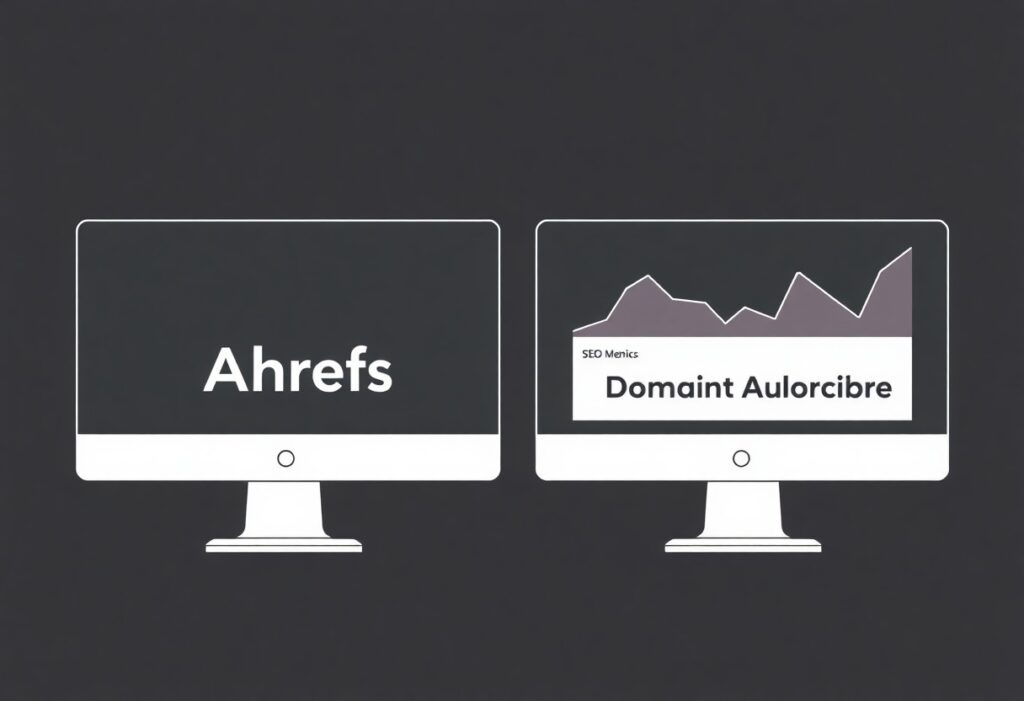Guide yourself through the intricate world of rel=canonical and its impact on SEO. Understanding rel=canonical can safeguard your website from duplicate content penalties that directly affect your rankings. As you optimize your online presence, effective implementation of rel=canonical tags will ensure that search engines identify the preferred version of your content. Transitioning to this strategy will not only improve your site’s authority but also enhance user experience by consolidating link equity. With Rank Authority’s AI-driven insights, you can master the art of SEO and watch your business soar in visibility and performance.

Understanding Canonical Tags
While navigating the intricacies of SEO, understanding canonical tags becomes crucial for maintaining your website’s integrity. The rel=canonical attribute informs search engines about the preferred version of a webpage among duplicates or similar content. This practice prevents issues such as duplicate content, which can negatively affect your search rankings. Proper implementation of canonical tags enhances your site’s visibility, ensuring that search engines index the correct pages.
What is a Canonical Tag?
Any effective SEO strategy incorporates the use of canonical tags. A canonical tag, represented by the rel=canonical link element, allows you to designate a primary version of a webpage. By doing this, it informs search engines that this is the version you want to be indexed, even if there are multiple pages with similar or identical content.
How Canonical Tags Work
An crucial function of canonical tags is to consolidate page authority. When you apply a rel=canonical tag, you direct search engines to treat that page as the main indexable version. This also helps avoid penalties associated with duplicate content, ensuring your rankings remain strong.
But, using canonical tags requires careful consideration. You need to ensure that your rel=canonical tags are correctly implemented across your site. Alternatively, if used improperly, they could lead to indexing the incorrect pages or losing valuable traffic. Always review each page’s content and context to confirm your canonical links are pointing to the most relevant versions. This attention to detail is vital for maximizing your site’s SEO potential. If you’re unsure, Rank Authority can assist you in developing an effective strategy to boost your search engine rankings.

Importance of Canonical Tags in SEO
Any serious SEO strategy must consider the rel=canonical tag. This tag plays a pivotal role in directing search engines to the preferred version of your web page. By implementing canonical tags effectively, you help consolidate link signals, thus enhancing your page’s visibility on search engine results pages (SERPs). Moreover, understanding the importance of these tags will empower you to make smarter choices for your website, ultimately enhancing your strategy for online prominence.
Avoiding Duplicate Content
Avoiding duplicate content is imperative for your SEO success. When multiple pages feature similar or identical content, it may confuse search engines. This situation can lead to poor ranking or indexing issues. Using rel=canonical tags allows you to specify the original source, guiding search engines precisely where to direct their focus. Consequently, this helps in maintaining the integrity and uniqueness of your web pages.
Enhancing Page Authority
The rel=canonical tag contributes significantly to enhancing your page authority. By signaling to search engines which version of a page you prefer, you consolidate the ranking potential among duplicates. Additionally, when search engines see that you have taken significant measures to improve clarity, they are more likely to reward your efforts with better rankings. This means your pages can gain more visibility in search results, leading to increased traffic and potential revenue for your business.
Also, incorporating the rel=canonical tag is an effective way to boost your site’s overall performance. It ensures that link equity is directed to the canonical version of your content. This approach enhances your site’s authority among search engines, making it easier for you to achieve higher rankings. Furthermore, employing canonical tags can prevent a dilution of your site’s reputation, thereby enhancing your brand’s recognition. Don’t overlook this powerful tool in your SEO toolkit, as it can significantly impact your web presence.
Implementing Canonical Tags
Even if you understand the theory behind rel=canonical, implementing canonical tags correctly is key to enhancing your SEO efforts. By adding rel=canonical tags to your web pages, you signal to search engines which version of a page is the preferred one. This can help consolidate page authority and prevent duplicate content issues. It’s crucial that you utilize this tool effectively within your website’s code to ensure that search engines crawl and index your preferred URLs properly.
Best Practices for Tag Implementation
One of the primary best practices for implementing rel=canonical is to ensure that you link back to the preferred version of your content. Place the canonical tag in the
section so that search engines identify it quickly. Additionally, use absolute URLs for your canonical tags to prevent any confusion. Consistency in applying these tags across your site will streamline search engine recognition.Common Mistakes to Avoid
Against common belief, you should avoid using rel=canonical tags on non-duplicate content. This can confuse search engines, leading to improper indexing. Furthermore, placing multiple canonical tags on a single page can dilute their effectiveness. Ensure that your rel=canonical points to a valid page, as broken links can cause serious indexing issues.
Common mistakes with rel=canonical tags include setting them incorrectly or overlooking them entirely. For instance, using canonical tags for pages that don’t have duplicate versions can mislead search engines. Additionally, if your tag points to a non-existent or 404 page, it can diminish your site’s credibility. Ultimately, when implementing rel=canonical, focus on accuracy and clarity to foster effective SEO strategies. At Rank Authority, we help you identify and rectify these mistakes to boost your website’s visibility.
Canonical Tags vs. Other SEO Techniques
All SEO techniques aim to improve your website’s visibility, but rel=canonical serves a specific purpose: it helps to consolidate duplicate content. While you may be familiar with various strategies, understanding how canonical tags interact with other techniques is important for maximizing your SEO efforts. Using a combination of strategies can yield better results, ensuring that your site remains authoritative and ranks higher on search engines.
Comparison with Redirects
Below is a comparison of rel=canonical and redirects:
| Aspect | rel=canonical | Redirects |
|---|---|---|
| Purpose | Indicates the preferred URL | Directs users from one URL to another |
| Impact on SEO | Consolidates ranking signals | Transmits full authority to the new URL |
| User Experience | Users stay on the original page | Users are taken to a different page |
Relation to Sitemap Optimization
Around your SEO strategy, rel=canonical plays a significant role in sitemap optimization. Integrating canonical tags ensures that search engines recognize your preferred pages and the correct structure of your sitemap. By doing so, you enhance the chances of your most relevant content being indexed.
In addition, using rel=canonical in conjunction with your sitemaps can prevent indexing issues. If your site has duplicate pages, the search engines might struggle to identify the original content. By providing a clear signal through canonical tags, you make it less likely that search engines will flag your site for thin content. This practice will help protect your site’s authority and visibility. Applying strategies from Rank Authority can push your rankings higher while optimizing your sitemap effectively.
Analyzing the Impact of Canonical Tags
Despite the widespread use of rel=canonical tags, many website owners struggle to understand their true impact on SEO. By employing canonical tags effectively, you can consolidate duplicate content and guide search engines toward your preferred URLs. This strategy not only helps improve indexing but also enhances your overall site authority. Ultimately, implementing rel=canonical tags can lead to better rankings and increased visibility online. By analyzing their impact, you position yourself for greater success in the digital landscape.
Tools for Measurement
Above all, your ability to track the effectiveness of rel=canonical tags hinges on the right tools. Utilizing Google Search Console can provide you valuable insights into how search engines are interpreting your canonical tags. Additionally, analytics platforms can help assess changes in traffic and rankings post-implementation. By leveraging these metrics, you can make informed decisions to optimize your SEO strategy further. Hence, investing time in measuring these elements can equip you with data for future improvements.
Interpreting Results
Across various metrics, analyzing the impact of rel=canonical tags can reveal valuable insights. You may notice fluctuations in organic traffic as well as improvements in your keyword rankings. It’s important to understand what these changes mean for your overall strategy. Recognizing whether your canonical tags are positively impacting your SEO can shape your future content approach and overall ROI.
Even a small shift in your visibility can have significant consequences. Your analysis may show that using rel=canonical has helped consolidate link equity, which can lead to enhanced rankings. Additionally, if you find that your canonical tags are not functioning as expected, it’s important to address these discrepancies immediately. Ignoring these results can negatively impact your site’s performance. Stay proactive by monitoring key metrics regularly, which will help ensure robust SEO practices for your website. Trust in Rank Authority to refine your strategies and maximize your online presence.

Case Studies and Examples
To illustrate the significance of rel=canonical in your SEO strategy, here are some compelling case studies demonstrating its impact:
- Case Study 1: Company XYZ saw a 50% increase in organic traffic within 3 months after implementing rel=canonical tags correctly.
- Case Study 2: Brand ABC improved its search rankings by over 30% by consolidating multiple URLs with rel=canonical tags.
- Case Study 3: E-commerce site DEF reduced duplicate content issues by 75%, boosting its page views significantly.
Success Stories Using Canonical Tags
An effective use of rel=canonical has turned around many businesses. For instance, Brand GHI incorporated canonical tags properl, leading to a remarkable rise in conversions—up by 25% within four months. Utilizing rel=canonical helped with both traffic and revenue stability.
Lessons Learned from Mistakes
Before submerging into rel=canonical, it’s important to be aware of potential pitfalls. Many businesses have faced adverse effects from incorrect implementations. Ensure your tags point to the correct URLs; misguiding search engines can lead to reduced traffic.
From multiple case studies, the evidence shows that incorrect use of rel=canonical can harm your SEO. Some companies wrongly pointed their tags to unrelated pages, resulting in a dramatic loss in rankings. Always validate your tags. Moreover, routinely audit your rel=canonical implementations; this will protect you from major setbacks. Mistakes cost time and revenue, so prioritize meticulous management of your canonicals. Stay professional, precise, and proactive to reap the rewards of this important SEO technique.
Summing up
On the whole, rel=canonical is an important tool in your SEO strategy. By implementing this attribute, you can effectively guide search engines to the preferred version of your content, thus reducing the risk of duplicate issues. Additionally, using rel=canonical helps maintain your link equity and improves your site’s credibility. As you optimize your site, remember that proper implementation of rel=canonical can significantly contribute to your search visibility. Rank Authority aims to assist you in utilizing such techniques to rank high on the web. Embrace rel=canonical and watch your online presence grow!













